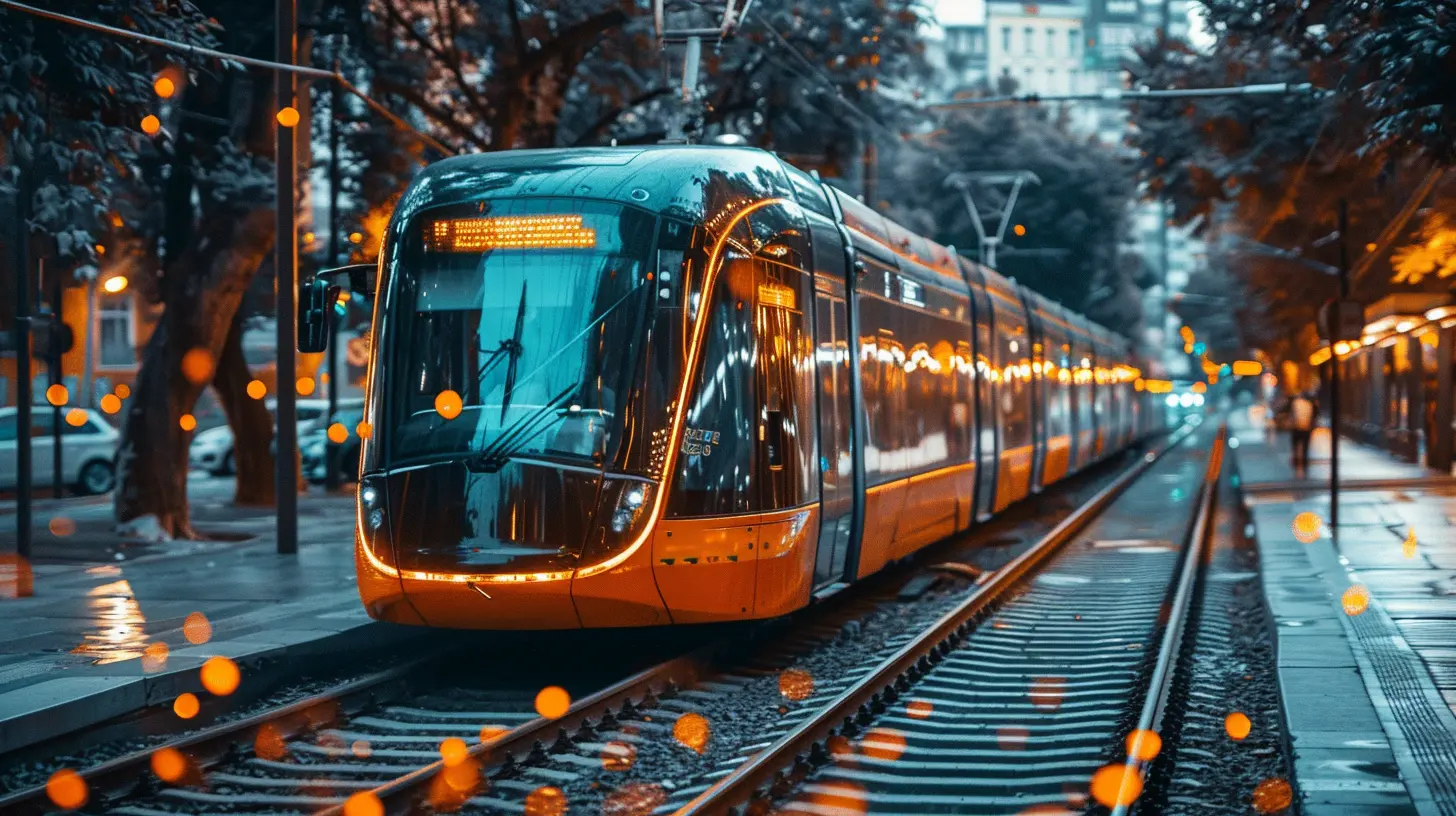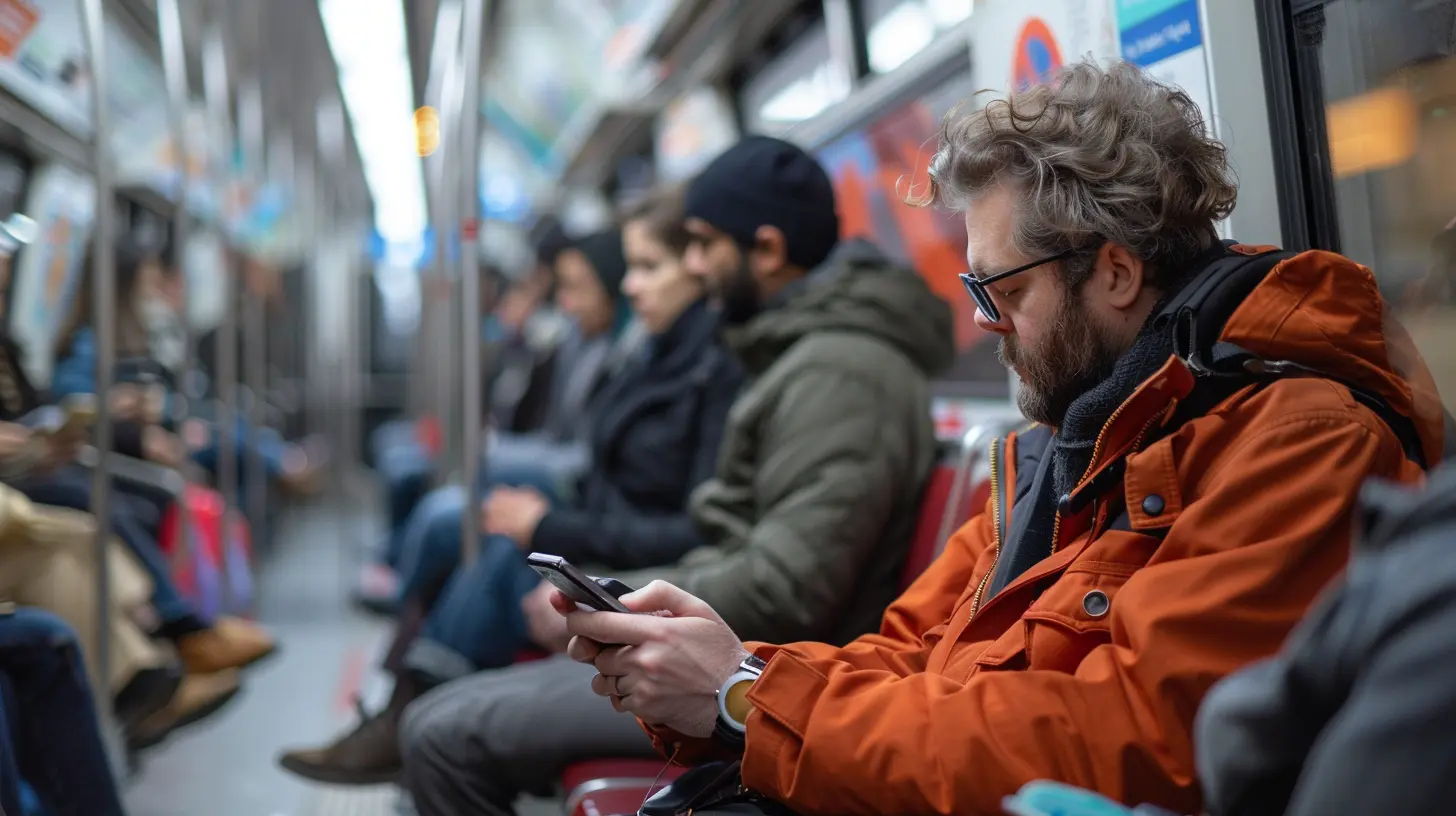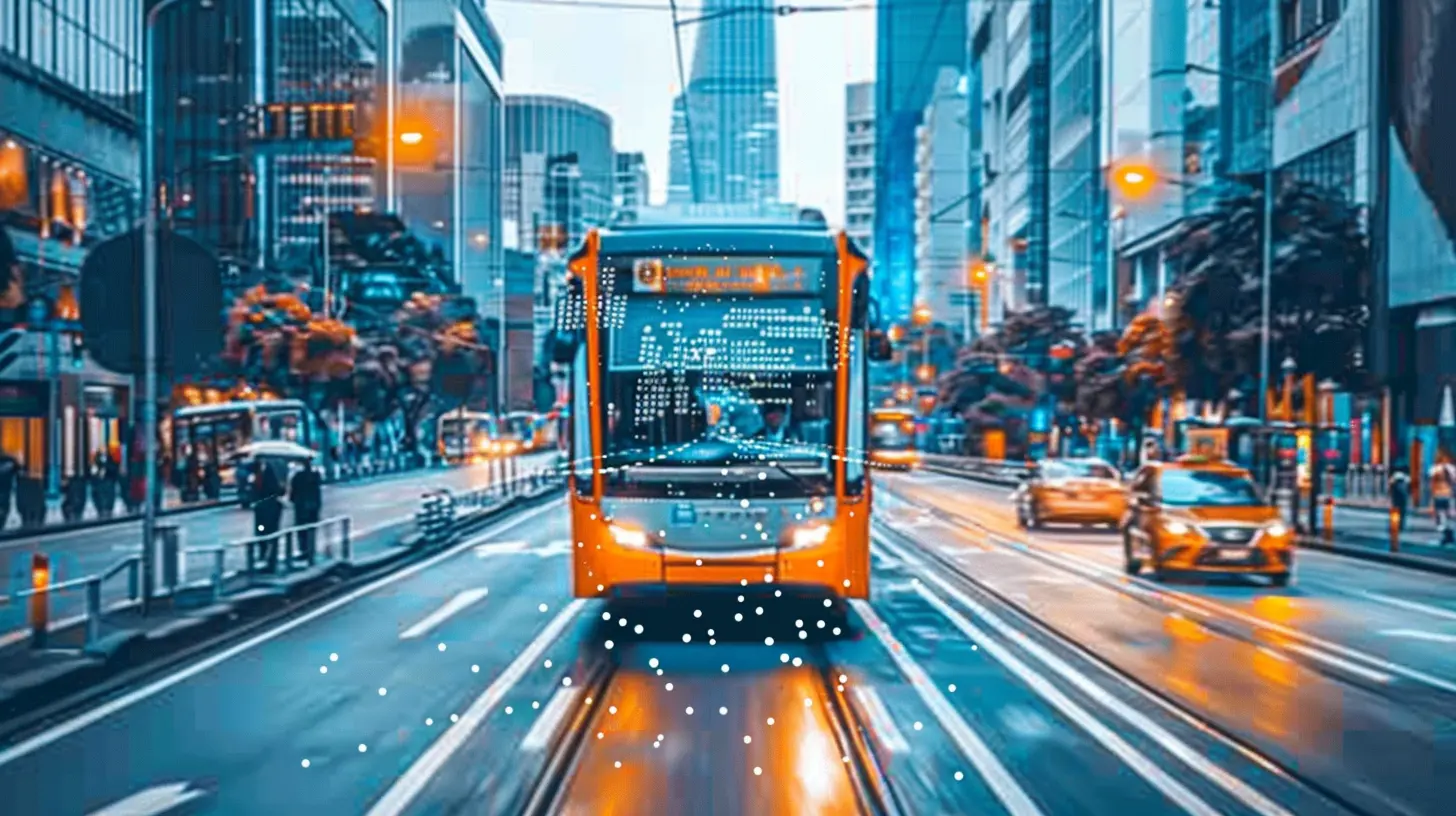How Mobile Apps Are Impacting the Future of Public Transportation
30 June 2025
Public transportation has always been a vital part of urban life. Whether it's buses, trains, or even bikes, public transit helps millions of people get to work, school, and everywhere in between. But as we move further into the digital age, the way we interact with and use public transportation is undergoing a massive transformation. And leading the charge? Mobile apps.
With smartphones becoming an essential part of our daily lives, it’s no surprise that mobile apps are now playing a critical role in shaping the future of public transportation. From streamlining ticket purchases to providing real-time updates, mobile apps are improving the efficiency, convenience, and accessibility of public transit systems in ways we couldn’t have imagined just a few years ago.
In this article, we’ll explore how mobile apps are revolutionizing public transportation and what that means for the future.

1. Convenience at Your Fingertips
Let’s face it—nobody likes waiting in line for a bus ticket, struggling to figure out if they’re on the right route, or trying to decipher complicated transit maps. Mobile apps have swooped in to save the day by offering users convenience that was previously unheard of.Imagine this: You’re running late for your morning meeting, and you need to catch the next bus. Instead of frantically searching for the nearest ticket booth, you simply open an app, buy your ticket, and hop on the bus. No lines, no hassle. It’s that simple.
But the convenience doesn’t stop at ticket purchases. Mobile apps also provide route planning, real-time tracking, and even updates on delays or service changes. You can now easily plan your commute, see exactly when the next train or bus will arrive, and check for any potential disruptions—all from your smartphone!
Real-Time Information
Public transit apps have changed the game by providing real-time information. Gone are the days of standing at the bus stop wondering if you missed your ride or if the bus is just running late. Now, with a quick glance at your phone, you can see where the bus is, how long it will take to arrive, and if there are any delays along the way.This kind of information is invaluable, especially during peak hours or in large cities where transportation systems can be unpredictable. The ability to plan your trip with confidence, knowing exactly when your ride will arrive, reduces stress and offers a level of reliability that was previously missing from public transit.

2. Cashless Payments and Ticketing
One of the most significant changes mobile apps have brought to public transportation is the ability to make cashless payments. In the past, paying for public transit typically involved fumbling around for loose change or purchasing physical tickets from kiosks. But now, with apps, you can pay directly from your phone using a credit card, debit card, or even digital wallets like Apple Pay or Google Pay.This not only makes the process faster and more convenient but also reduces the need for physical contact, which became increasingly important during the COVID-19 pandemic. By eliminating the need for cash or physical tickets, mobile apps are making public transportation more hygienic and efficient.
Mobile Ticketing
Many transit systems now offer mobile ticketing through their apps. This means you don’t need to carry around paper tickets or transit cards anymore. Instead, you simply purchase a ticket through the app, and your phone becomes your ticket. You can show the digital ticket to the conductor or scan a QR code at the turnstile.Mobile ticketing also makes it easier to manage your transit budget. Some apps allow you to store multiple tickets or passes on your phone, meaning you won’t have to worry about losing them. Plus, with many apps offering rewards or discounts for frequent riders, you could actually save money by using an app instead of buying traditional tickets!

3. Personalized Travel Experiences
Mobile apps aren’t just about making things easier—they’re also about making things better. Through the power of data and artificial intelligence, public transit apps are now offering personalized travel experiences that cater to individual needs.For example, apps can learn your daily commute and suggest the best routes based on your travel habits. They can also take into account factors like traffic, weather, and service disruptions to provide you with the most efficient route possible. Some apps even allow you to set preferences, such as avoiding crowded routes or choosing the fastest option.
This level of personalization makes public transportation more user-friendly and can significantly improve your daily commute. Instead of treating transit as a one-size-fits-all solution, apps are now allowing people to customize their travel experiences to fit their unique needs.

4. Reducing Environmental Impact
Sustainability is more important than ever, and mobile apps are helping public transportation systems become more eco-friendly. By encouraging more people to use public transit instead of relying on private cars, these apps are helping reduce traffic congestion and lower carbon emissions.Think about it: If more people can access real-time data, easily purchase tickets, and plan their routes with confidence, they're more likely to choose public transit over driving. This shift from private cars to buses, trains, and bikes can have a huge positive impact on the environment.
Plus, some apps are designed to promote eco-friendly travel behaviors. For instance, certain apps allow users to compare the carbon footprint of different transportation options, helping them make more sustainable choices. Others offer rewards for using public transit, further incentivizing people to leave their cars at home.
Bike and Scooter Sharing
In recent years, many cities have introduced bike and scooter-sharing programs, which are often integrated into public transit apps. These systems offer a greener alternative for short trips, and they’re especially useful for the "last mile" of a journey—the distance between a transit stop and your final destination.By making it easier to access these eco-friendly modes of transportation, mobile apps are not only improving convenience but also promoting sustainability.
5. Enhancing Accessibility
Public transportation should be for everyone, but for many people, it has traditionally been difficult to access. Whether it’s due to a disability, language barriers, or simply a lack of information, some individuals have found it challenging to use public transit systems.Mobile apps are helping to break down these barriers. Many apps now include features designed to improve accessibility, such as voice-guided navigation for those with visual impairments or multilingual support for non-native speakers. Some apps also provide step-free route options for individuals with mobility challenges, ensuring that everyone can use public transportation with ease.
In addition, mobile apps make it easier to access information about accessible services. For instance, users can check if a particular bus or train has wheelchair access or if there are elevators available at a specific station. This information empowers individuals to plan their trips more confidently and use public transportation without fear of encountering obstacles.
6. Improving Safety and Security
Safety is a top concern for anyone using public transportation, and mobile apps are playing a role in making transit systems safer. Many apps now offer features that enhance security and provide peace of mind for passengers.For example, some apps allow users to track their ride in real-time and share their location with friends or family. This can be especially reassuring for those traveling at night or in unfamiliar areas. Additionally, some public transit apps have integrated emergency buttons that connect users with local authorities in case of an emergency.
Moreover, by providing real-time updates on service disruptions or delays, apps can help users avoid potentially unsafe situations. For instance, if a particular train station is experiencing overcrowding, users can be notified and choose an alternative route.
7. The Role of Artificial Intelligence and Big Data
Mobile apps wouldn’t be able to offer all these amazing features without the power of artificial intelligence (AI) and big data. By analyzing vast amounts of data, AI can predict traffic patterns, optimize routes, and provide personalized travel suggestions.Big data also helps transit authorities improve their services. By collecting data on how people use public transportation, authorities can identify areas where service needs to be improved, such as adding more buses to a popular route or adjusting schedules to better meet demand.
AI-powered apps can even offer predictive analytics, allowing users to see how long it will take to get from point A to point B under different conditions—such as during rush hour or in bad weather. This level of insight helps users make better decisions about their travel plans and ensures a smoother experience overall.
8. The Future of Public Transportation
So, what’s next for public transportation? With mobile apps continuing to evolve, the future looks bright. We can expect even more integration between different modes of transportation, such as buses, trains, bikes, and ride-sharing services, all within a single app.Additionally, as AI and machine learning continue to improve, we can anticipate even more personalized and efficient travel experiences. Imagine an app that not only plans your route but also anticipates traffic and adjusts your commute in real-time, ensuring that you always arrive at your destination as quickly as possible.
We may also see further advancements in autonomous vehicles, with mobile apps enabling seamless communication between passengers and self-driving buses or trains. And with sustainability becoming increasingly important, apps may play an even greater role in promoting eco-friendly transportation options.
The Role of 5G
Another exciting development is the rollout of 5G technology, which promises to revolutionize mobile apps and public transportation. With faster data speeds and reduced latency, 5G will allow apps to provide even more accurate real-time information and enable new features like augmented reality navigation.Conclusion
Mobile apps are transforming public transportation in ways that are making it more convenient, accessible, and efficient. From real-time updates to cashless payments, these apps are improving the way we travel and shaping the future of transit systems worldwide. As technology continues to evolve, we can expect even greater innovations that will further enhance our public transit experiences.So, the next time you catch a bus or hop on a train, take a moment to appreciate just how much easier (and smarter) mobile apps are making your journey. The future of public transportation is here, and it’s only going to get better from here!
all images in this post were generated using AI tools
Category:
Mobile AppsAuthor:

Ugo Coleman
Discussion
rate this article
2 comments
Freya McWilliams
Great insights! Apps truly transform public transportation's future.
October 10, 2025 at 4:34 AM

Ugo Coleman
Thank you! I'm glad you found the insights valuable. Apps are indeed reshaping how we navigate public transportation.
Bianca Sweeney
This article beautifully highlights the potential of mobile apps to transform public transportation. Embracing these innovations can greatly enhance accessibility and convenience for everyone.
July 6, 2025 at 11:18 AM

Ugo Coleman
Thank you for your insightful comment! I completely agree—mobile apps are indeed revolutionizing public transportation, making it more accessible and convenient for all.


